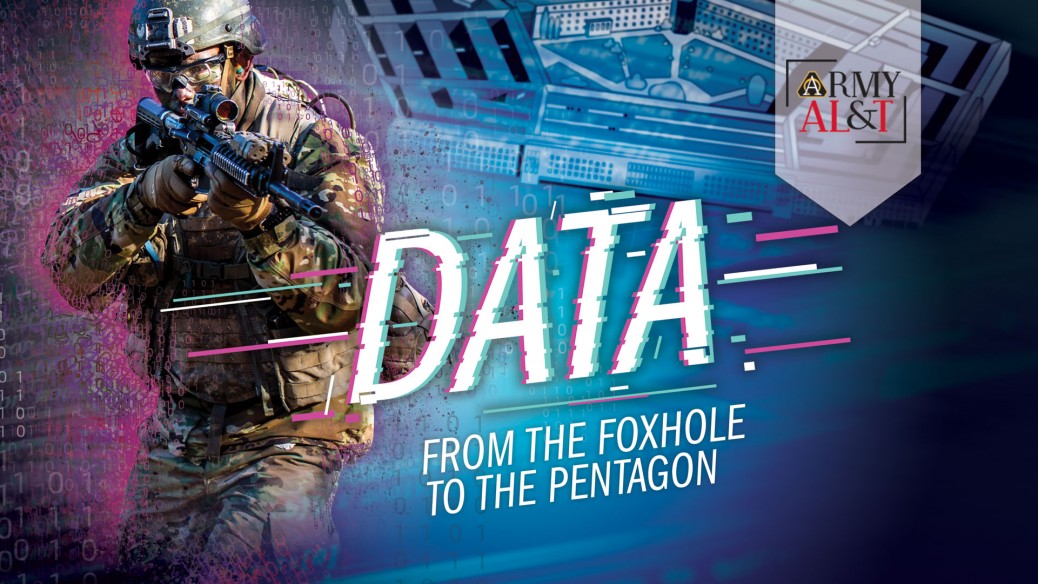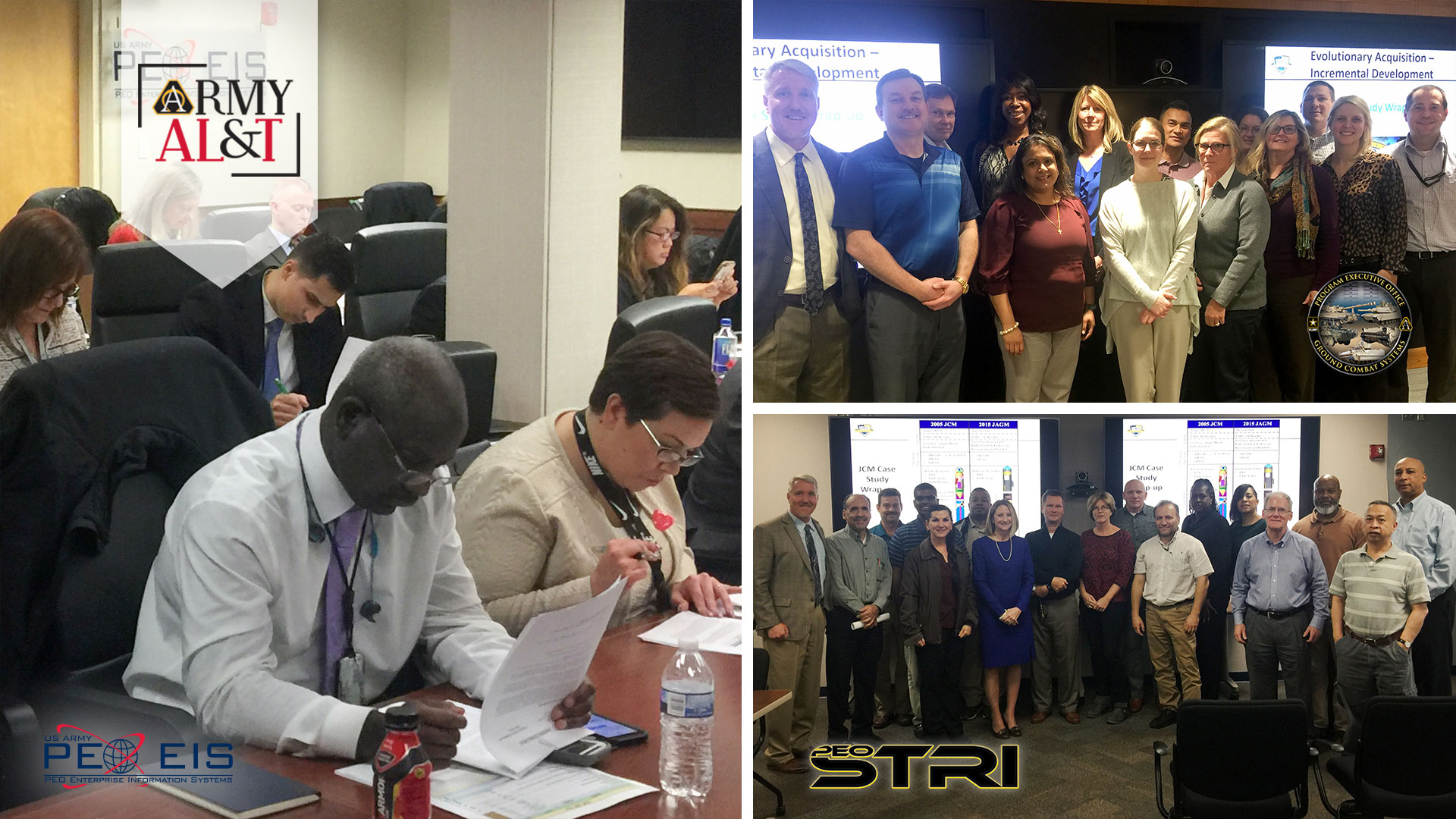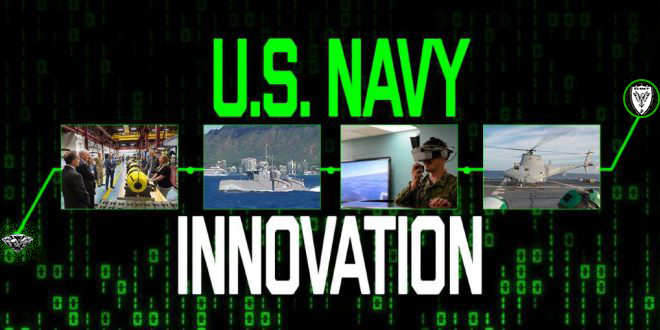FROM THE ARMY ACQUISITION EXECUTIVE
Dr. Bruce D. Jette
THE ZEN OF DATA
Managing data holistically from the foxhole to the Pentagon enables better decision-making.
The old saying is that “an army runs on its stomach,” but that’s not quite the case anymore. With our feet firmly planted in the digital age, our Army doesn’t run on its stomach—it runs on data.
Currently the acquisition community has no enterprise-wide tools for managing Army acquisition-related data such as financial information, system requirements, logistics or schedules. The execution of billion-dollar programs is maintained on isolated Excel spreadsheets of program and budget analysts. When senior decision-makers need information, they have to send a request through their chain of command. That request then gets consolidated over the course of days and weeks by various headquarter elements until the needed information is sent back up the chain. It takes too much time. At present, there is no efficient and effective way to store and share the data that leaders need when they need it. We are changing that.
Commercial companies such as Amazon and Google and the financial industry have demonstrated that current and emerging technologies make data management critical to being an industry leader. Now is the time for Army acquisition to invest in the tools and governance structures that will facilitate a data culture transformation in the Army.
I believe effective data management is one of the keys to successfully rationalizing Army data—in other words, grouping related data fields into tables, determining key fields and then relating those tables using common key fields. Efficient access to the right data allows Army leaders to make better, well-informed decisions. But to achieve effective data management, we need to change the way we conduct business—change our culture—from the executive level at the Pentagon to the Soldier in the foxhole.
HOLISTIC DATA
Data is defined as factual information used as a basis for reasoning, discussion or calculation. It is invaluable, but only if it is collected, managed and maintained properly. Without effective data management, our business processes could experience a dependability breakdown—there could be dozens of needlessly duplicative processes, products could be wildly over budget and anything that’s measured in numbers, like how many tanks are operationally ready, could be totally inaccurate.
The Army is an enormous entity, and the amount of data it generates is staggering. The acquisition enterprise itself is no small part of that, and we’re aiming to have a holistic approach to managing data. It is absolutely imperative.
Right now, data is stored in many different locations—in various clouds or on many different servers—and isn’t particularly accessible to those who may need it; it’s siloed. In other words, we have different datasets in different places, and no way to share or access them easily when we need them. Many “authoritative data” may be in conflict with other “authoritative data.” Managing data holistically means:
- Having a single owner of any particular data (file, data field and data fill).
- Having only one authoritative instance of any particular data.
- Authority for access to and use of, including managed replication and data entry, any authoritative particular data.
- Procedures for use, access, management, control, update and entry.
- Relational database structure. A relational database stores data in tables; data can be accessed or reassembled from these tables in many different ways without having to reorganize them. The result is to interlink data, make it flexible for users and eliminate data duplication.
Once this is accomplished, linking different data sets can form the “big picture” of acquisition and securing that data.
We need a plan to implement data in a holistic data life cycle, with three major phases:
- Data collection. Quality data is gathered from across the acquisition enterprise at all levels, either by manual or—in the future—automated entry. The objective is to automate conveniently and simply at the lowest level possible, to provide insight when consolidated without further intervention.
- Data integration and interpretation. The datasets are quickly and easily accessible to those who need and are authorized to use them. They provide accurate, actionable information.
- Data maintenance. Data is archived, auditable and secured, at rest and in transport, to ensure that it is usable in the long term and protected from internal and external threats, such as ransomware. Auditability will ensure traceability, facilitate forensics and help eliminate insider threats.
It is important that the entire acquisition community participate in the holistic data management approach for it to work most effectively. At the tactical level, this means entering timely, accurate, quality data into your collection system. From the supervisory or strategic level, it means reviewing the data for current applicability. At the senior leadership level, this means using the data to make well-informed, near- and long-term program decisions as well as applying it to the modernization of the future force. It means, from the Assistant Secretary of the Army for Acquisition, Logistics and Technology level, developing and implementing an achievable implementation plan.
ACQUISITION DATA DOMAIN
My office is developing the Acquisition Data Domain, which will be a significant framework for holistic and effective data management. It will allow Army acquisition leaders to have comprehensive information on all aspects of the Army’s modernization programs through three tiers: data entry, data management and data-driven decisions:
- Data entry and capture. Thorough identification and capture of authoritative appropriate data is the key to success in the first tier of the domain. The goal for initial data entry is to automate the collection of data as it is being generated at the working level. At most, users will enter data once and it will be pulled into a central data repository, which will allow access for many other people and organizations based on their responsibilities. The key to making data entry efficient and authoritative will be identification and adoption of tools that help those at the working level to conduct daily business and satisfy requirements.
- Data management system (DMS). This second tier will link different data sets across functions, weapon systems and phases of an acquisition program life cycle. It will capture, store and manage data from program conception to divestiture. The creation of the DMS is the boldest and most complex portion of this vision. The various Army programs and systems begin generating data as the concept is born and continue through development, production and sustainment up to divestment.
Within each phase of the life cycle, there are different data subdomains such as finances, schedules, performance specifications, requirements and logistics. Program interdependencies will require the DMS to identify and link the cost, schedule and performance requirements between the programs. Once these data sets have been developed and linked, Army leaders will be able to use analytical tools to make better decisions.
- Data-driven decisions. The third tier will require the identification and development of data analysis tools to assist leaders with decision-making and resource planning. The tools will likely use technologies such as artificial intelligence and machine learning to identify life cycle red flags early—like overspending and production delays. Learning about those indicators early will help program managers deliver quality products on time and on budget, and will allow senior leaders to make better decisions on current and future modernization programs.
CONCLUSION
Effective data management will be the key to efficient business operations in the future. This is another case where we benefit by looking to industry and emulating their success. If we use all the resources at our disposal, such as artificial intelligence and industry’s example of effective data management, we can ensure a future acquisition enterprise in which business processes are truly streamlined, with programs and products practically always guaranteed to be delivered on time and on budget. In the end, our Soldiers will be the beneficiaries.
This article is published in the Summer 2019 issue of Army AL&T magazine.

















